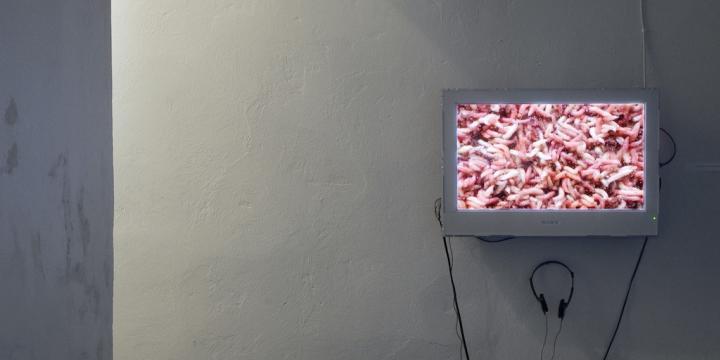“Cinema is the ultimate pervert art. It doesn't give you what you desire, it tells you how to desire.”
Slavoj Žižek, The pervert story of cinema.
Films' scenes tempt us with a variety of impossible situations. Easiness with which the actors treat the incidents they play, unreasonable behaviors not justified by real experience, artificial horror or happiness, all of those belong to film-like reality. Viewers forget about their personal experience and treat everything the films show as if it was truly reality. There are many different ways to explain such a phenomenon. Slavoj Žižek, cinema's commentator, refers to our hidden sensibility. It is located somewhere on the border of reality and dream, which makes us accept obvious paradoxes in films. The film is a place where our fascinations, obsessions or fears come true. Sigmund Freud finds our pleasure in experiencing something which is „eery”, in recognizing something which is seemingly unknown. As if in Greek drama, the viewer identifies with the actor, experiences catharsis caused by someone else’s pain, happiness or fear. The films which are based on horror, thriller or science fiction are accepted by the public. Irrational evil or fear, which we cannot explain with our own experience, becomes more attractive, if we can deny their presence in our own lives. However, they exist somewhere deep inside; like denied pictures from the past.
There are two levels of the „Uncanny” exhibition. Our obsessions and fears, which can be found in the films' scenes and art and the attempt to analyze the means, which are used to create artificial tension. The artists, who present their works during the exhibition, derive inspiration from the horror movies. Using the language of cinema they try to find such scenes which awake the feelings of „eeriness.” This way they create space which is filled with perversion, violence and fantasy hidden in seemingly banal gestures. Those gestures, seen from a specific side, can bring us, or at least certify, to madness which can be found in our seemingly balanced lives. Presented stories are not designed to be perceived as if they came from tunnels of fear, like in amusement parks. However, we know quite well that grotesque or tragicomedy are ones of many formal means used to built tension. Due to dangerous contact of reality and psychedelic experience, due to tempting feelings of disgust or sudden fear, „eeriness” is going to become a part of our experience.
Piotr Stasiowski







